
A reference card or Romer [1] is a device for increasing the accuracy when reading a grid reference from a map.

A reference card or Romer [1] is a device for increasing the accuracy when reading a grid reference from a map.
Made from transparent plastic, paper or other materials, reference cards are found on most baseplate compasses. Essentially, they are a specially marked-out ruler which matches the scale of the map in use. The scales are laid out in reverse, such that by lining up the numbers given in the grid reference with the gridlines for the square in question, the corner of the Romer lies on the location the grid reference of which is being read. Some transparent versions have a small hole at the origin when this is not at the corner of the reference card. This allows access to the map such that the location could be marked with a pencil if using the reference card in reverse having been given a grid reference to start with. They are used in many types of land navigation and map reading, to give a more accurate grid reference than one just estimated by eye from the grid lines on the map.
While Romers of various designs are available commercially, they can easily be made by hand, by using a computer, or by finding a website [2] with instructions.
Invented in 1915 by Temporary Lieutenant (later Captain) Carrol Romer, M.C., R.E. (1883–1951), then "Maps", First Army: i.e. OC Maps and Printing Section, such reference cards were widely used by the British Army in World War I and after, being described in a Maps GHQ booklet Maps and Artillery Boards in December 1916. The name 'Romer' seems only to have been used officially from 1929. [3]
A version was later developed for car navigational rallies by car rally partners Eric Gardner and John Cridford during the early 1950s, the 'Garford Romer' was available for both imperial and metric Ordnance Survey maps and is still sold today. Although a registered design when it was first made and sold it was and still is much copied.

Orienteering is a group of sports that involve using a map and compass to navigate from point to point in diverse and usually unfamiliar terrain whilst moving at speed. Participants are given a topographical map, usually a specially prepared orienteering map, which they use to find control points. Originally a training exercise in land navigation for military officers, orienteering has developed many variations. Among these, the oldest and the most popular is foot orienteering. For the purposes of this article, foot orienteering serves as a point of departure for discussion of all other variations, but almost any sport that involves racing against a clock and requires navigation with a map is a type of orienteering.

A personal digital assistant (PDA), also known as a handheld PC, is a multi-purpose mobile device which functions as a personal information manager. PDAs have been mostly displaced by the widespread adoption of highly capable smartphones, in particular those based on iOS and Android, and thus saw a rapid decline in use after 2007.

A compass is a device that shows the cardinal directions used for navigation and geographic orientation. It commonly consists of a magnetized needle or other element, such as a compass card or compass rose, which can pivot to align itself with magnetic north. Other methods may be used, including gyroscopes, magnetometers, and GPS receivers.

In modern mapping, a topographic map or topographic sheet is a type of map characterized by large-scale detail and quantitative representation of relief features, usually using contour lines, but historically using a variety of methods. Traditional definitions require a topographic map to show both natural and artificial features. A topographic survey is typically based upon a systematic observation and published as a map series, made up of two or more map sheets that combine to form the whole map. A topographic map series uses a common specification that includes the range of cartographic symbols employed, as well as a standard geodetic framework that defines the map projection, coordinate system, ellipsoid and geodetic datum. Official topographic maps also adopt a national grid referencing system.
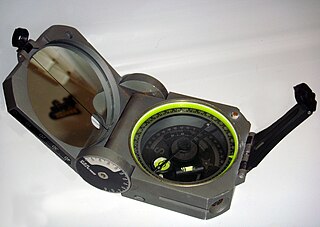
In navigation, bearing or azimuth is the horizontal angle between the direction of an object and north or another object. The angle value can be specified in various angular units, such as degrees, mils, or grad. More specifically:
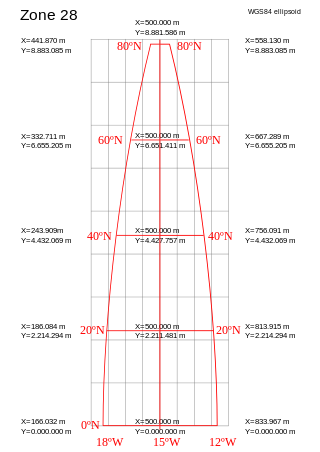
A projected coordinate system – also called a projected coordinate reference system, planar coordinate system, or grid reference system – is a type of spatial reference system that represents locations on Earth using Cartesian coordinates (x, y) on a planar surface created by a particular map projection. Each projected coordinate system, such as "Universal Transverse Mercator WGS 84 Zone 26N," is defined by a choice of map projection (with specific parameters), a choice of geodetic datum to bind the coordinate system to real locations on the earth, an origin point, and a choice of unit of measure. Hundreds of projected coordinate systems have been specified for various purposes in various regions.
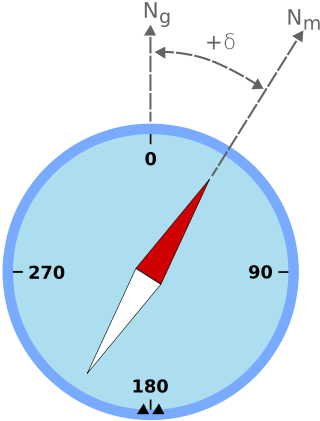
Magnetic declination is the angle between magnetic north and true north at a particular location on the Earth's surface. The angle can change over time due to polar wandering.
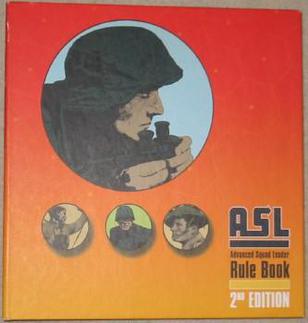
Advanced Squad Leader (ASL) is a tactical-level board wargame, originally marketed by Avalon Hill Games, that simulates actions of squad sized units in World War II. It is a detailed game system for two or more players. Components include the ASL Rulebook and various games called modules. ASL modules provide the standard equipment for playing ASL, including geomorphic mapboards and counters. The mapboards are divided into hexagons to regulate fire and movement, and depict generic terrain that can represent different historical locations. The counters are cardboard pieces that depict squads of soldiers, crews, individual leaders, support weapons, heavy weapons, and vehicles.

An automotive navigation system is part of the automobile controls or a third party add-on used to find direction in an automobile. It typically uses a satellite navigation device to get its position data which is then correlated to a position on a road. When directions are needed routing can be calculated. On the fly traffic information can be used to adjust the route.

Intelligent Parking Assist System (IPAS), also known as Advanced Parking Guidance System (APGS) for Toyota models in the United States, is the first production automatic parking system developed by Toyota Motor Corporation in 1999 initially for the Japanese market hybrid Prius models and Lexus models. The technology assists drivers in parking their vehicle. On vehicles equipped with the IPAS, via an in-dash screen and button controls, the car can steer itself into a parking space with little input from the user. The first version of the system was deployed on the Prius Hybrid sold in Japan in 2003. In 2006, an upgraded version debuted for the first time outside Japan on the Lexus LS luxury sedan, which featured the automatic parking technology among other brand new inventions from Toyota. In 2009, the system appeared on the third generation Prius sold in the U.S. In Asia and Europe, the parking technology is marketed as the Intelligent Park Assist System for both Lexus and Toyota models, while in the U.S. the Advanced Parking Guidance System name is only used for the Lexus system.
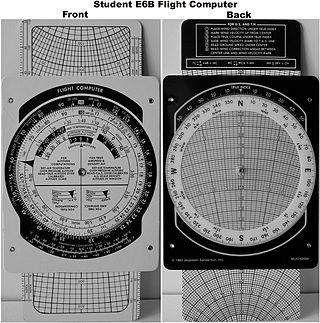
The E6B flight computer is a form of circular slide rule used in aviation. It is an instance of an analog calculating device still being used in the 21st century.

The VAXBI bus is a computer bus designed and sold by the Digital Equipment Corporation (DEC) of Maynard, Massachusetts.

Diver navigation, termed "underwater navigation" by scuba divers, is a set of techniques—including observing natural features, the use of a compass, and surface observations—that divers use to navigate underwater. Free-divers do not spend enough time underwater for navigation to be important, and surface supplied divers are limited in the distance they can travel by the length of their umbilicals and are usually directed from the surface control point. On those occasions when they need to navigate they can use the same methods used by scuba divers.
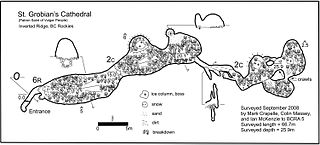
A cave survey is a map of all or part of a cave system, which may be produced to meet differing standards of accuracy depending on the cave conditions and equipment available underground. Cave surveying and cartography, i.e. the creation of an accurate, detailed map, is one of the most common technical activities undertaken within a cave and is a fundamental part of speleology. Surveys can be used to compare caves to each other by length, depth and volume, may reveal clues on speleogenesis, provide a spatial reference for other areas of scientific study and assist visitors with route-finding.
The Multi Media Interface (MMI) system is an in-car user interface media system developed by Audi, and was launched at the 2001 Frankfurt Motor Show on the Audi Avantissimo concept car. Production MMI was introduced in the second generation Audi A8 D3 in late 2002 and implemented in majority of its latest series of automobiles.
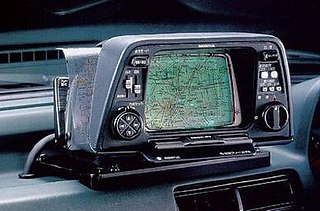
The Electro Gyro-Cator was claimed to be the world's first automated commercially available automotive navigation system. It was co-developed by Honda, Alpine, and Stanley Electric Co..

The Ordnance Survey (OS) is the national mapping agency for Great Britain. The agency's name indicates its original military purpose, which was to map Scotland in the wake of the Jacobite rising of 1745. There was also a more general and nationwide need in light of the potential threat of invasion during the Napoleonic Wars. Since 1 April 2015, the Ordnance Survey has operated as Ordnance Survey Ltd, a government-owned company, 100% in public ownership. The Ordnance Survey Board remains accountable to the Secretary of State for Science, Innovation and Technology. It was also a member of the Public Data Group.

Here Technologies is a Dutch multinational group specialized in mapping technologies, location data and related automotive services to individuals and companies. It is majority-owned by a consortium of German automotive companies and American semiconductor company Intel whilst other companies also own minority stakes. Its roots date back to U.S.-based Navteq in 1985, which was acquired by Finland-based Nokia in 2007. Here is currently based in The Netherlands.

RoboRally is a board game for 2–8 players designed by Richard Garfield and published by Wizards of the Coast (WotC) in 1994. Various expansions and revisions have been published by both WotC and by Avalon Hill.

Inscryption is a 2021 roguelike deck-building game developed by Daniel Mullins Games and published by Devolver Digital. Directed by Daniel Mullins, it was originally released for Windows on October 19, 2021, and on Linux, macOS, PlayStation 4, PlayStation 5, Nintendo Switch, Xbox One and Xbox Series X/S over the following two years. The game puts the player in a cabin where a mysterious gamemaster makes them play a tabletop game.